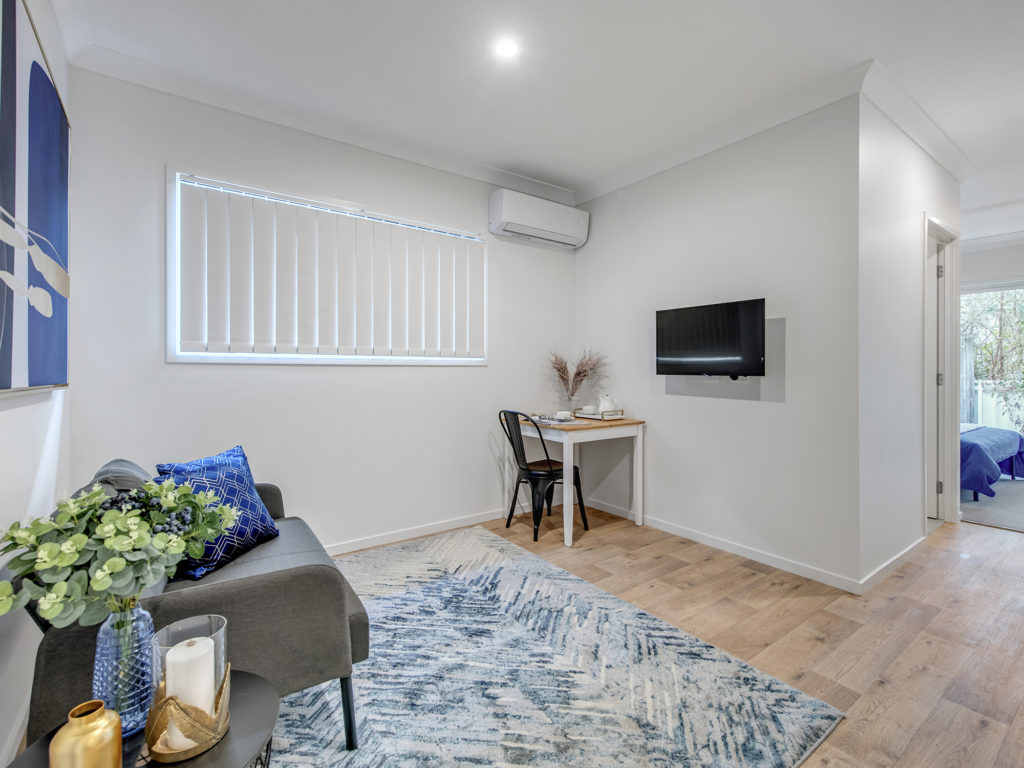For the last decade or two, we’ve seen co-living options springing up around the world, helping make housing more affordable and catering to emerging lifestyles and values. Now it’s picking up speed here in Australia and as a property investment option for beginners, it makes a lot of sense.
For centuries, humans have lived with a mix of other humans, starting in the Stone Age with extended families sharing shelters, to the early 20th-century kibbutzim of Israel, and the “lodging” houses of post-war Europe.
Who co-lives today?
Typically it’s Millennials and increasingly Gen Zs who have been spearheading the co-living movement; and given that Millennials are the biggest generation in the world, their preferences will inevitably go a long way in shaping our societies.
That said, co-living is becoming more inclusive.
Many over 65s – empty-nester Baby Boomers – are now mortgage free and share the millennials’ desire for more freedom, a variety of life experiences. For others, it’s an economic necessity: see the rise of homelessness among women in their 50s which I have written about in a previous blog.

How does co-living accommodation work?
Co-living today generally takes the form of purpose-built housing that mixes fully-furnished rental spaces with a range of communal lifestyle spaces. A co-living unit or “micro-apartment” typically includes a bed, a sitting area, desk, access to a bathroom (private or not) and sometimes, a kitchen/ette.
Rental terms are often more flexible than standard leases, and your monthly rent bill might include a concierge or complex manager, as well as fast internet, utilities and room cleaning. Larger micro-apartment blocks offer shared living spaces, laundry, kitchens – and in some higher-end examples, gyms, swimming pools, roof top terraces and barbecues.
Your co-living complex may also offer entertainment events for residents, and co-working spaces so that work-from-home (WFH) residents don’t have to slog it out alone on the laptop five days a week.
One of the exciting opportunities of co-living is it can be built around the lifestyles and interests of specific residents, i.e., families might share playrooms and child-minding services; artists could take advantage of art/crafting and exhibition spaces; older (and younger) residents could share maintenance of vegie gardens.
LEARN HOW you can become a co-living investor by converting ordinary residential properties into co-living micro-apartments with 7-11% returns through my High Income Real Estate Course HERE.

The situation overseas
Co-living has been going strong in Europe, the Americas and Asia for decades now. The movement thrives in cosmopolitan areas where rents are high; and where entrepreneurs have the foresight to develop new types of accommodation that meet the changing needs of renters.
In Europe there are a number of different chains offering co-living accommodation, like Quarters, founded in 2012 in Berlin, a city which has battled an affordability crisis for years. Quarters offers individual units in microclusters or studios, combined with shared facilities and smart technology systems. Residents sign on to rent for anywhere from 9 to 36 months.
Habyt is another provider of fully-furnished, fully-serviced micro-apartments and the choice of shared or private living for people in Germany, Spain, Italy, and Portugal. Meanwhile, in Stockholm, Tech Farm offers its “global citizens” access to meditation/yoga rooms, multiple kitchens, cozy living rooms and a home cinema!
In Hong Kong and Singapore, real estate prices are amongst the highest in the world. In Hong Kong, for example, residential property prices have increased by 262% since 2009 and young people there are embracing co-living as an affordable lifestyle choice.
The Lyf chain of co-living residences now has buildings in Japan, Thailand, Singapore and the Philippines – with China and Australia being developed over the next 3 years. Other chains are popping up in the US too.
For those renters keen to see what co-living options are available, the coliving website lets you search for options in the city where you want to live, from New York City to Berlin to Bali.

In Australia, 3 key factors are boosting interest in co-living.
1. The affordability gap
It can be difficult to find affordable housing in Australian cities, either because there’s a shortage of rental properties, or because rents are high – or both. In fact, the inability of incomes to keep up with rents is causing rental stress, especially among low-income earners.
Rising home prices also makes the idea of owning property a distant dream for some.
If young people can’t, or don’t want to live at home with their parents, their options are limited. As I have said in a previous blog about housing affordability, it’s part of a bigger problem: we need to change how we think about “homes” in Australia. And we need to -rethink our property investment strategies, especially for beginners.
2. Shifts in how we live and interact
There are some key factors driving citizens to co-live.
Technological transformation making careers flexible
Today, many of us are lucky enough to have access to technology that keeps us connected wherever we go. Countless aspects of our lives are being digitalised, with apps bringing convenience on mobile and our information held in the cloud.
These developments are giving us the flexibility to break free of traditional hierarchies, the 9-to-5 grind and office-based work. Many younger people are choosing to become freelancers, contractors or they’re starting online businesses, with technology enabling them to be location independent and still earn a living. Many employers are facilitating this practice by allowing staff to work remotely, especially since COVID-19.
Overall these new, more fluid ways of working and living mean people can chase career prospects, and live where their salary has more buying power.
Choosing experience over ownership
Pre COVID, the idea of the “global nomad” was strong with people seeing the world as their playing field and “experience” as the ultimate goal. It’s likely we’ll see this mindset return when the COVID vaccination is universal, international travel resumes and public confidence returns.
In the meantime, Australians are moving interstate and intrastate <link to COVID trends and opportunities article> to explore new experiences.
We’re also seeing the trend of people owning less and having less attachment to “things”, whether vehicles, appliances or houses. The sharing economy phenomenon and peer-to-peer platforms have further disrupted how many of us think about cars, and even about clothes.
In real estate, this has translated into greater demand for rentals, especially among those who are graduating from student accommodation and are used to inhabiting spaces very differently to previous generations. Many are now looking for more openness and collaboration in the spaces they inhabit; they’re more adaptable and willing to share facilities.
Co-living is definitely playing its part in this disruption story.
Prioritising our planet
Co-living also helps support another core value of younger generations and that is sustainability, from keeping carbon emissions down through energy-efficient appliances in kitchens and laundries, to creating less food waste; even just making more efficient use of living spaces and sharing resources and costs.
Many of the developers creating co-living accommodation are making an effort towards sustainable practices, with sustainability an important pillar of their business.

3. Creating communities
There is a downside to the freedom and independence that come with travelling for work or living away from family and friends. People can experience isolation, alienation and a reduction in that essential sense of belonging to a community. These can lead to mental health issues like anxiety and depression.
During COVID, we witnessed WFH employees missing the social interaction that a physical workplace brings. In fact, what we’ve seen is that COVID lockdowns have actually stimulated an interest in co-living, with people reminded how important it is to feel part of a community, to feel connected to others as a way to counteract loneliness and isolation.
Co-living as a property investment strategy for beginners
As our cities grow, as key societal trends accelerate, as affordability reduces further, the co-living trend is not only becoming more attractive – in the longer term, it will become a necessity. This presents an opportunity for property investors willing to try alternatives to mainstream housing options of the past.
And you don’t need to be a major developer or even an experienced investor to become part of the movement. As a property investment option for beginners, creating co-living spaces can provide positive cashflow, healthy capital growth and help you pay off your property faster.
GET STARTED: Find out about how your can reach your investment goals with through co-living investments with my free Positive Cash Flow Live webinar HERE.





